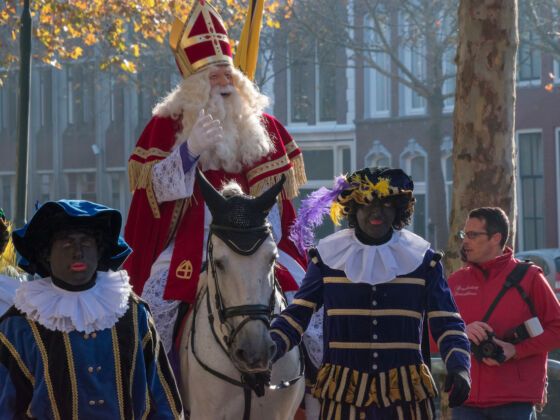We turned the corner onto Dam Square, and high above us, a smiling man in blackface dangled mid-rappel above an H&M store. His giant teeth sparked all the more white against the rain-soaked sky, against his coal black makeup, against the ruby red lipstick.
We had just arrived to Amsterdam, were trying to walk off our jetlag, and didn’t know anything about St. Nicholas Day, when the Dutch celebrate the arrival of Sinterklaas, a white-bearded St. Nicholas; unlike Santa Claus, Sinterklaas is skinny, wears a tall miter hat, carries a crozier, and brings children presents the night of December 5, the eve of his name day, and not on Christmas.
